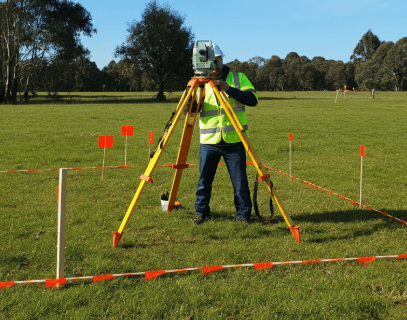Are you thinking about buying land for subdividing? This smart investment strategy can transform larger parcels into lucrative smaller lots, unlocking immense profit potential. Subdividing can significantly increase a property’s value, with developers often earning upwards of $198,000 in profit per lot. However, success in buying land for subdividing requires a clear understanding of zoning laws, market demand, and property potential. Renowned real estate experts Steve Daria and Joleigh, known for their expertise in buying land for cash, have helped countless investors master this process. Their insights can guide you to avoid common mistakes and make the most out of your investment. Don’t miss the chance to tap into this highly profitable market. Schedule a free consultation with Steve and Joleigh today to unlock the full potential of your real estate ventures!
Key Points
- Understand Zoning Laws and Regulations: Before buying land for subdividing, research the local zoning laws and land-use restrictions. These rules will determine how you can divide the property and whether proceeding with your investment plans is feasible.
- Evaluate Market Demand: Analyze the local real estate market to understand the demand for subdivided lots. High demand for smaller parcels could make your investment more profitable and easier to sell.
- Budget for Infrastructure Costs: Subdividing land often involves expenses like roads, utilities, and surveying. To avoid unexpected financial setbacks, ensure you account for these costs in your budget.
- Work with Experienced Professionals: Partner with experts like Steve Daria and Joleigh, who specialize in buying land for cash and provide valuable insights into the subdividing process. Their expertise can help you steer clear of expensive pitfalls while ensuring you get the most out of your investment.
- Plan for Resale Timing: Timing is crucial when selling subdivided land. Based on market conditions, assess the best time to list the lots to achieve optimal resale value.
What does subdividing land mean?
Subdividing land means dividing a large piece of property into smaller lots, which can then be sold or developed separately.
It’s a process that allows property owners to maximize the value of their land by creating several individual parcels from a single large one.
When buying land for subdividing, you’re essentially looking for a property with the potential for this type of division, considering zoning laws, access to utilities, and local regulations.

Subdividing can be profitable because smaller lots often attract more buyers and can be sold at higher combined prices than the original unsegmented land.
For instance, if a large parcel is split into five lots, and each lot sells well, the total revenue could exceed what you’d make selling the property as a whole.
However, it’s important to understand that costs are involved, such as permits, surveys, and infrastructure like roads or drainage.
Success in buying land for subdividing requires proper research and planning, as not all properties are suitable for division.
Partnering with seasoned experts in land development can help you uncover the best opportunities while steering clear of potential challenges.
Get Started: Get Your Cash Offer Below…
We are direct land buyers. There are no commissions or fees and no obligation whatsoever. Start below by sharing where your property is and where we can send your offer…
Why is buying land for subdividing a smart investment strategy?
Buying land for subdividing is a smart investment strategy because it allows you to unlock the hidden value of a large property.
By dividing one parcel into smaller, individual lots, you can attract more buyers who are often willing to pay a premium for manageable land sizes.
This process can significantly increase the total combined value of the lots compared to selling the original property as a whole.
Buying land for subdividing is particularly effective in areas with a high demand for residential or commercial development.
It also offers flexibility since the lots can be sold or developed based on current market trends.
While there are upfront permits, surveys, and infrastructure costs, the potential returns often outweigh these expenses when done correctly.
Another reason this strategy is profitable is that smaller lots typically sell faster, giving you quicker access to cash flow.
With proper planning and the right team of experts, you can reduce risks and increase profits when investing in subdividable land.
What should I know about zoning laws before buying land for subdividing?
- Understand Property Zoning Classifications: Zoning laws classify land as residential, commercial, agricultural, or mixed-use. Knowing the zoning classification helps you determine if subdivision is allowed and what type of buildings can go on the land.
- Check Minimum Lot Size Requirements: Some areas have rules on the smallest size, and a lot can be subdivided. Ensure the land you’re considering meets these requirements to avoid future hurdles.
- Know the Permits You’ll Need: Before buying land for subdividing, find out what permits are required for the process. Depending on local laws, these can include subdivision permits, building permits, and environmental approvals.
- Look into Utility and Infrastructure Needs: Access to utilities like water, electricity, and sewage plays a big role in zoning compliance. Ensure the subdivided lots meet infrastructure standards to prevent costly upgrades later.
- Understand Restrictions and Future Changes: Zoning laws may include restrictions on property use or changes in density. It’s also important to know that zoning regulations might evolve, so consult local authorities to understand potential long-term impacts.
- Research Environmental Regulations: Some properties are subject to environmental zoning laws, such as limits on building near wetlands or protected areas. Gaining a clear understanding of these laws can help you avoid costly setbacks and wasted time by ensuring your projects comply with environmental regulations from the start.
- Learn About Local Variance Processes: If a zoning rule conflicts with your subdivision plans, you may be able to apply for a variance. This process allows you to request exceptions to specific rules, but it’s important to know it can take time and might not always be approved.

What initial costs should I consider when planning to subdivide land?
When planning to subdivide land, there are several initial costs to keep in mind.
First, you’ll need to pay for a property survey to determine boundaries and how the land can be divided.
Zoning application fees may also apply, especially if rezoning is required to make subdivision possible.
Engineering and design costs can arise if infrastructure, like roads or utilities, needs to be developed on the lots.
Permits are another key expense, as local authorities often require approval for subdivision plans and any associated construction.
Legal fees might come into play if you need help navigating regulations or drafting contracts.
Clearing the land, such as removing trees or debris, could incur additional costs depending on the state of the property.
Utility hookups, including water, electricity, and sewage, must also be considered to prepare the plots for sale or development.
With proper research and planning when buying land for subdividing, you can prepare for these costs and manage your investment wisely.
How long does it take to complete the subdivision process?
1. Initial Research and Feasibility Study
This step can take 1 to 3 months.
It involves looking into zoning laws, property surveys, and infrastructure requirements.
This time helps identify whether the land can actually be subdivided and what permits you’ll need.
2. Submitting Applications and Getting Permits
The permit approval process often takes 3 to 6 months, but timelines vary based on local government offices.
Delays can happen if applications are incomplete or if additional requirements, such as environmental assessments, are needed.
Patience is key, as this step is crucial to moving forward.
3. Hiring Professionals to Draft Plans
Hiring engineers, surveyors, and designers to create detailed subdivision plans can take 2 to 4 months.
These plans must meet both legal and technical requirements, which can take time and careful coordination.
4. Completing Necessary Infrastructure Work
Building roads, arranging for utilities, and ensuring the lots meet infrastructure standards might take another 6 to 12 months.
Factors like weather conditions and contractor availability can impact timelines significantly.
5. Final Approval and Registration
After all work is done, it can take 1 to 3 months to receive final approvals from local authorities.
Once approved, the newly subdivided lots must be registered with the Land Titles Office, which is the last step in the process.
How can I get started with buying land for subdividing?
Getting started with buying land for subdividing begins with thorough research.
First, identify areas with high property demand and study the local zoning laws to ensure subdivision is allowed.
Next, hire professionals like land surveyors and engineers to assess the property for potential boundaries and infrastructure needs.
You’ll also want to check on the permits required by local authorities, which may include subdivision and building permits.
Partnering with experts like Steve Daria and Joleigh, seasoned real estate investors and cash land buyers, can offer invaluable guidance during this process.
They understand the complexities of land development and can help you avoid costly mistakes.
Once you’ve done your due diligence and secured the property, create a clear plan to divide and develop the land.
To take the first step, reach out to professionals like Steve and Joleigh and confidently start your subdivision investment.
**NOTICE: Please note that the content presented in this post is intended solely for informational and educational purposes. It should not be construed as legal or financial advice or relied upon as a replacement for consultation with a qualified attorney or CPA. For specific guidance on legal or financial matters, readers are encouraged to seek professional assistance from an attorney, CPA, or other appropriate professional regarding the subject matter.
